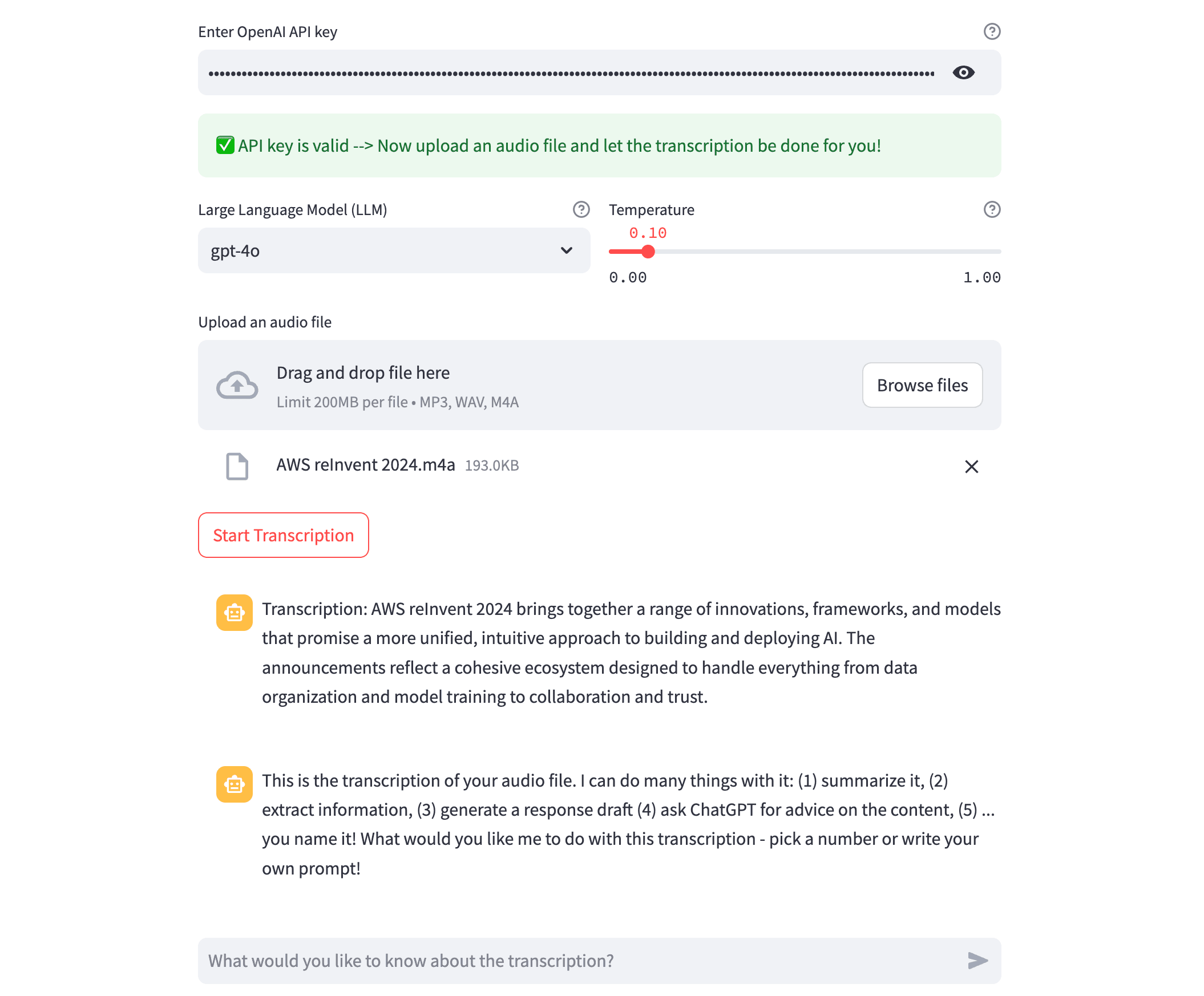Memos-to-Text: An AI-Powered and Interactive Transcription Solution

Do you sometimes get lengthy Whatsapp Messages? Or have you recorded Voice Memos that you’d like to have in writing and, ideally, extract some info? Then Memos-to-Text might be something for you.
Memos-to-text has started as a personal project based on the need to streamline transcription and interaction with audio content, such as voice memos. It aims particularly at addressing the challenge of digesting audio messages that nobody has the time to listen to in full.
The application leverages advanced AI technologies to convert audio files into text and facilitate exchange with the transcription content using OpenAI’s latest language models.
Links to the app:
Core Features
- Voice Memo Transcription: At its core, the application transcribes voice memos and long audio messages to written text.
- Audio File Compatibility: The application supports popular formats such as MP3, WAV, and M4A, ensuring versatility.
- Interactive Chat Interface: By integrating OpenAI’s GPT models such as gpt-4o with a chat interface, the app allows users to engage with transcriptions interactively.
- Analysis Capabilities: By designing the message flow for Streamlit and using OpenAI’s API specifications with regards to message structure, the app can natively offer responses such as:
- Summarize lengthy recordings
- Extract key information and themes
- Automate drafting of responses or reports
- Suggest improving content clarity and structure
- Customizable Parameters: Users can select between GPT models like gpt-4o and gpt-4o-mini and adjust temperature settings of the model to balance creativity and precision.

Building the Application
- Framework Selection: Streamlit was chosen as a web-framework for its simplicity and capability to create chat-based web interfaces. As a Python-based framework it integrates well with OpenAI’s API.
- Transcription Engine: The transcription is powered by OpenAI’s Whisper model, which offers high accuracy in transcription tasks for various languages.
- Chat-based Text Analysis: OpenAI’s latest GPT models such as gpt-4o and gpt-4o-mini were integrated for their versatility in natural language processing tasks. The streaming of responses was picked to enhance the user experience, particularly to generate long transcriptions in a sequential manner.
- Privacy and Security: A conscious effort was made to process data in-memory and avoid permanent storage. API keys are securely handled, reflecting a commitment to user privacy.
Conclusion
Memos-to-Text offers a look into the potential of integrating speech processing with interactive insights and is a lean tool improving how we handle audio content with the inspiring possibilities of AI.